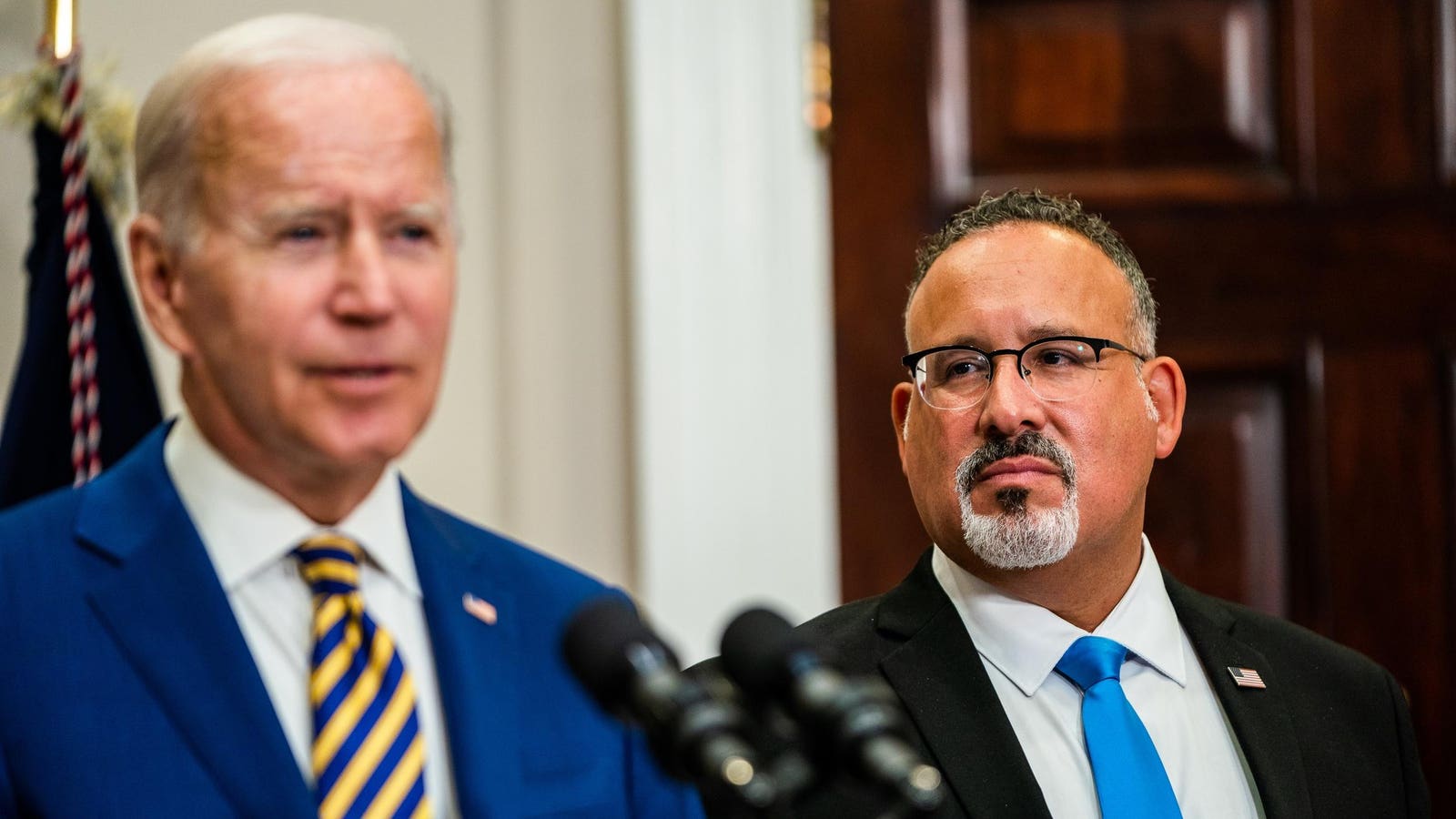The Education Department has released the most detailed information yet on a new student loan forgiveness program being developed by the Biden administration. According to these updates, officials are honing in on providing debt relief to four distinct groups of borrowers, as well as a fifth group tied to financial hardship.
The new program, designed to replace the student loan forgiveness plan that was scrapped by the Supreme Court last summer, is in the midst of a lengthy rulemaking process. The department has released new draft regulatory text in advance of the next round of public hearings.
Here’s what borrowers need to know about the new student loan forgiveness plan including who may qualify, and when the relief could be available.
Second Attempt At Broad Student Loan Forgiveness
The newest student loan forgiveness plan is essentially the administration’s “Plan B” in response to this summer’s ruling overturning Biden’s initial debt relief plan. That initiative would have wiped out up to $20,000 in federal student loans for millions of borrowers.
To establish that first plan, the Biden administration relied on the HEROES Act. This statute, passed by Congress more than two decades ago in response to the September 11th terrorist attacks, gives the Secretary of Education legal authority to modify or waive the normal rules governing the federal student loan system. Relying on this statute was an attractive option for administration officials as it allowed the Education Department to bypass the normal regulatory drafting process, which can be lengthy and tedious. But the Supreme Court ruled in June that despite broad statutory language, Congress did not expressly provide authority for student loan forgivenes when it passed the HEROES Act.
So the Biden administration is trying again — this time, via the Higher Education Act. Unlike the HEROES Act, the HEA does expressly allow the Education Department to waive or reduce federal student loans. And multiple administrations in both major political parties have relied on the HEA to eliminate federal student loan debt, although not on a mass scale.
The Education Department is currently going through a rulemaking process, which is typically required to write new rules for HEA programs, to create this new student loan forgiveness plan. The department established a rulemaking committee of stakeholders, which will try to find consensus on the rules and parameters governing the new program through a series of public meetings. The committee held its inaugural hearing earlier this month.
Four Groups Of Borrowers Eyed For Student Loan Forgiveness Under New Plan
In advance of the next rulemaking committee meeting scheduled for next week, the Education Department on Monday released draft regulatory text identifying four groups of borrowers for student loan forgiveness under the new program. This text provides more details than ever on what top officials may be thinking, and expands upon an issue paper issued earlier this month that provided some initial guidance.
The Biden administration is eyeing student loan forgiveness for four primary borrower groups:
- Borrowers whose federal student loan balances are much greater now than the amount originally borrowed. This could be due to negative amortization associated with interest accrual and capitalization, or excessive fees due to past defaults.
- Individuals with student loans that first entered repayment 25 or more years ago. These may be borrowers who wouldn’t qualify for immediate student loan forgiveness under programs like the IDR Account Adjustment, perhaps because they had long periods that would not count (such as periods spent in default or in bankruptcy).
- Those who took out student loans to attend career-training programs that “created unreasonable debt loads or provided insufficient earnings for graduates, as well as borrowers who attended institutions with unacceptably high student loan default rates.” The department may be eyeing borrowers who were harmed by their schools but don’t qualify for student loan forgiveness under existing programs, like Borrower Defense to Repayment.
- Borrowers who qualify for student loan forgiveness under existing plans, but have not applied.
The department also indicated it is still considering making the new student loan forgiveness plan available to a fifth group of borrowers — those who are experiencing “financial hardship that the current student loan system does not currently adequately address.” But officials want to develop more robust details on how to identify those who would fit within this category.
Borrowers could receive partial or complete federal student loan forgiveness under the new program, depending on the debt relief category and the borrower’s circumstances, according to an Education Department official. The official also indicated that the department is considering providing automatic relief — without a formal application — where possible.
Rulemaking Process Continues For New Student Loan Forgiveness Plan
“President Biden and I are committed to helping borrowers who’ve been failed by our country’s broken and unaffordable student loan system,” said Secretary of Education Miguel Cardona in a statement on Monday. “These draft proposals would build on the historic $127 billion in loan forgiveness the Biden-Harris administration has already approved for nearly 3.6 million borrowers. We are fighting to ensure that student debt does not stand in the way of opportunity or prevent borrowers from realizing the benefits of their higher education.”
The rulemaking committee will be discussing the draft regulatory text and the categories of borrowers at the next negotiated rulemaking session scheduled for November 6 and 7. The committee will also focus on better identifying the parameters for borrowers who could qualify for student loan forgiveness under the financial hardship prong. “Questions… include which types of borrowers may be experiencing hardship, whether standards used to make improvements to the bankruptcy process could be applied to student debt relief, and what data would be needed to determine whether a borrower is facing hardship,” said the department in its statement.
“Through this process, the Department will continue to refine regulatory text in advance of the third session December 11 and 12. The public will have an opportunity to submit written comments on the draft rules when they are published next year.”
The new student loan forgiveness plan is expected to be finalized and available by July 2025. However, the Biden administration could exercise early implementation authority available under the HEA to make the program available to borrowers sooner than that — potentially sometime in 2024.
Further Student Loan Forgiveness Reading
Student Loan Nightmare: Millions See Payment Errors as Biden Administration Punishes Servicer
Check Your Email: 50,000 Borrowers Get Student Loan Forgiveness Notices, And Yes, They’re Real
5 Student Loan Forgiveness Updates As On-Ramp Begins And Problems Worsen
Didn’t Get A Student Loan Forgiveness Email? 7 Possible Reasons Why
Read the full article here













Leave a Reply